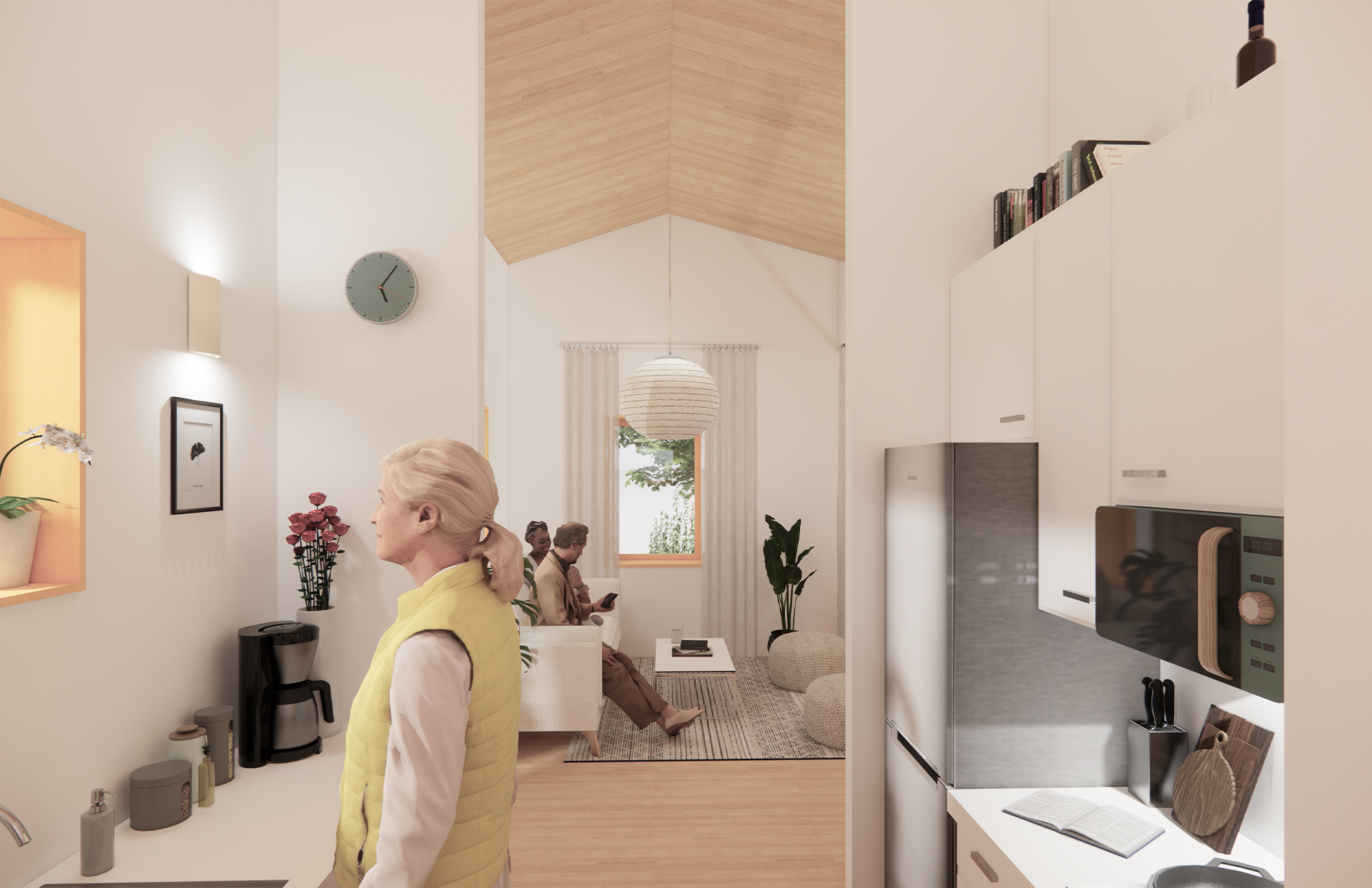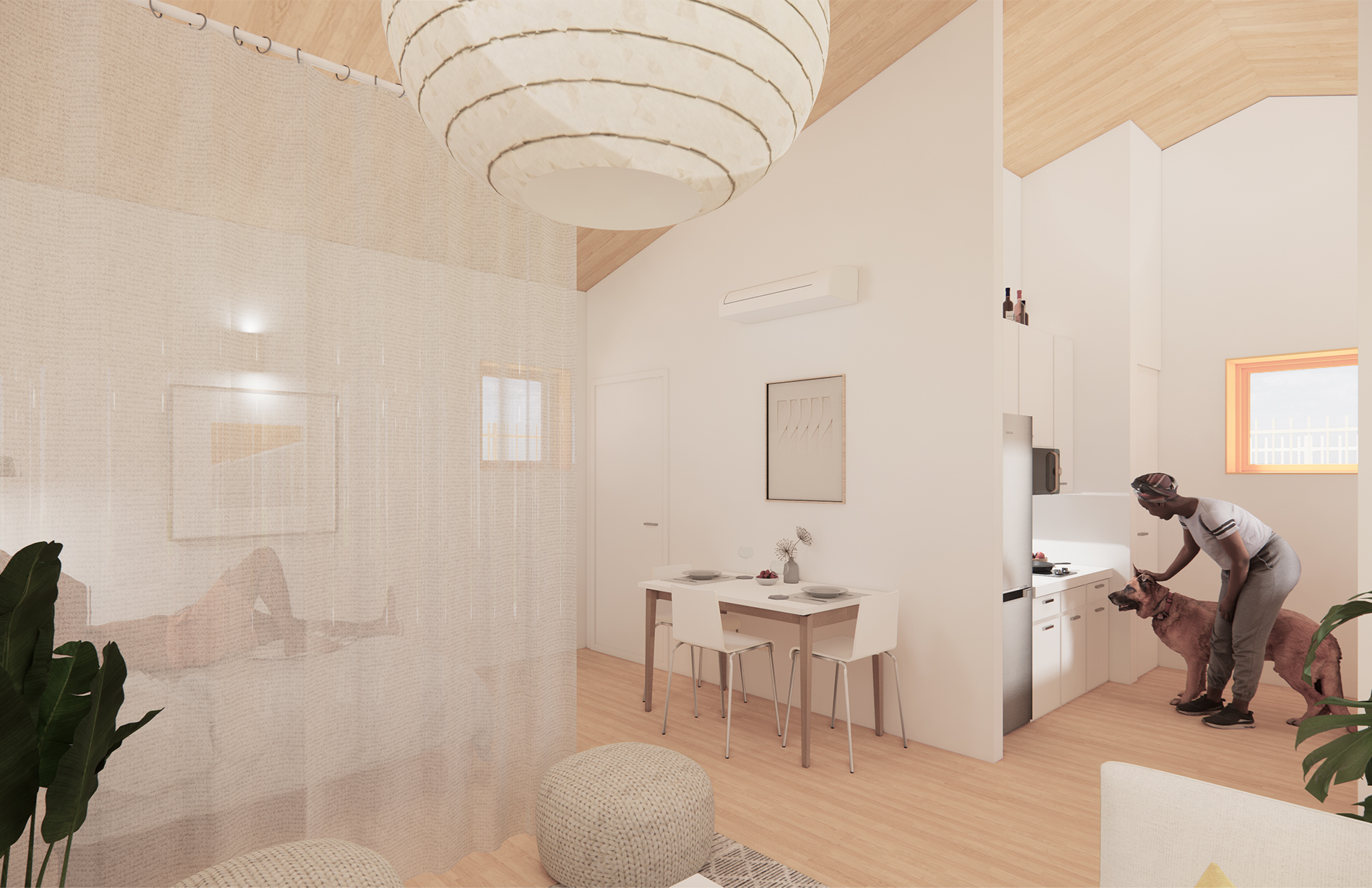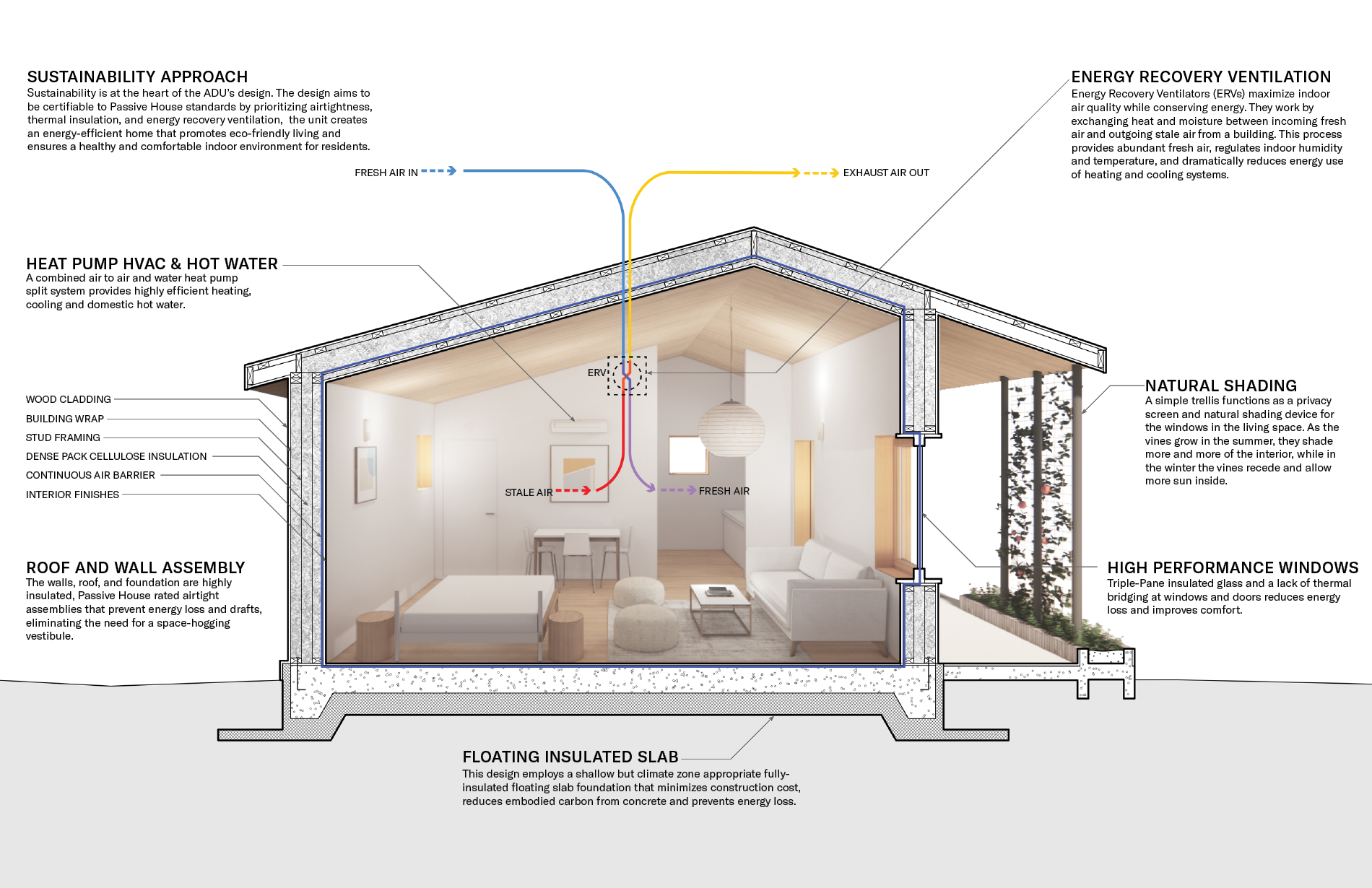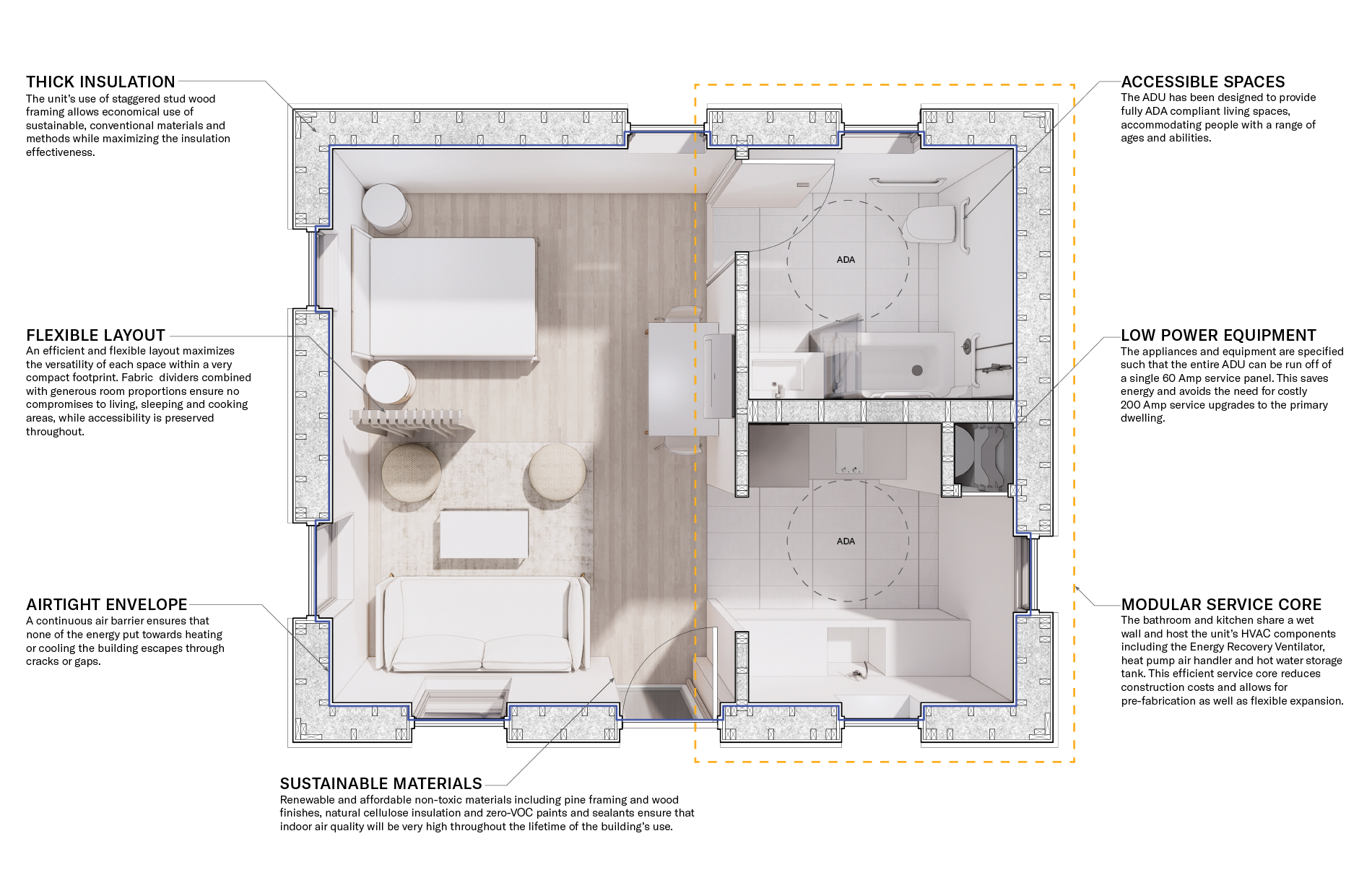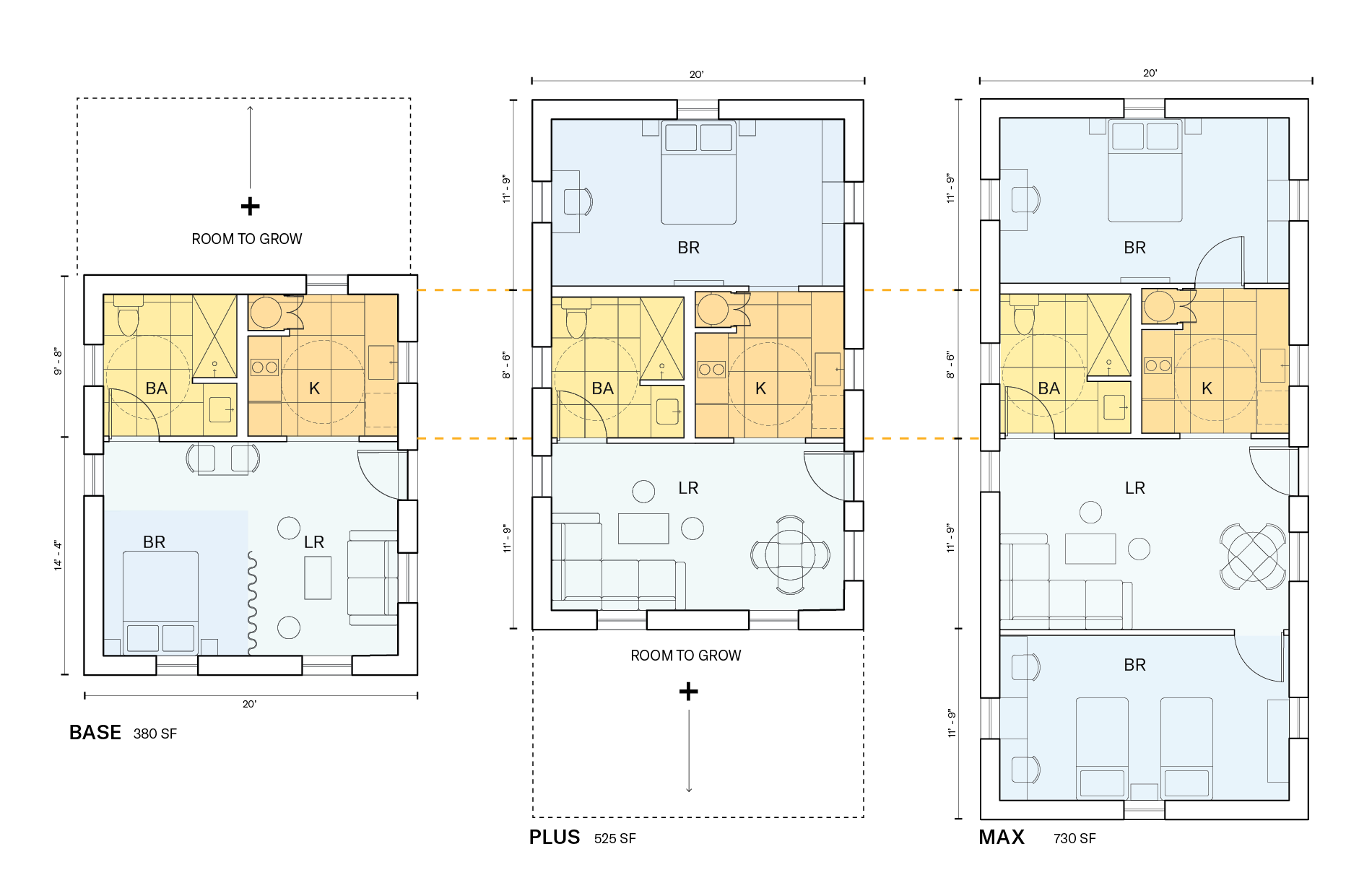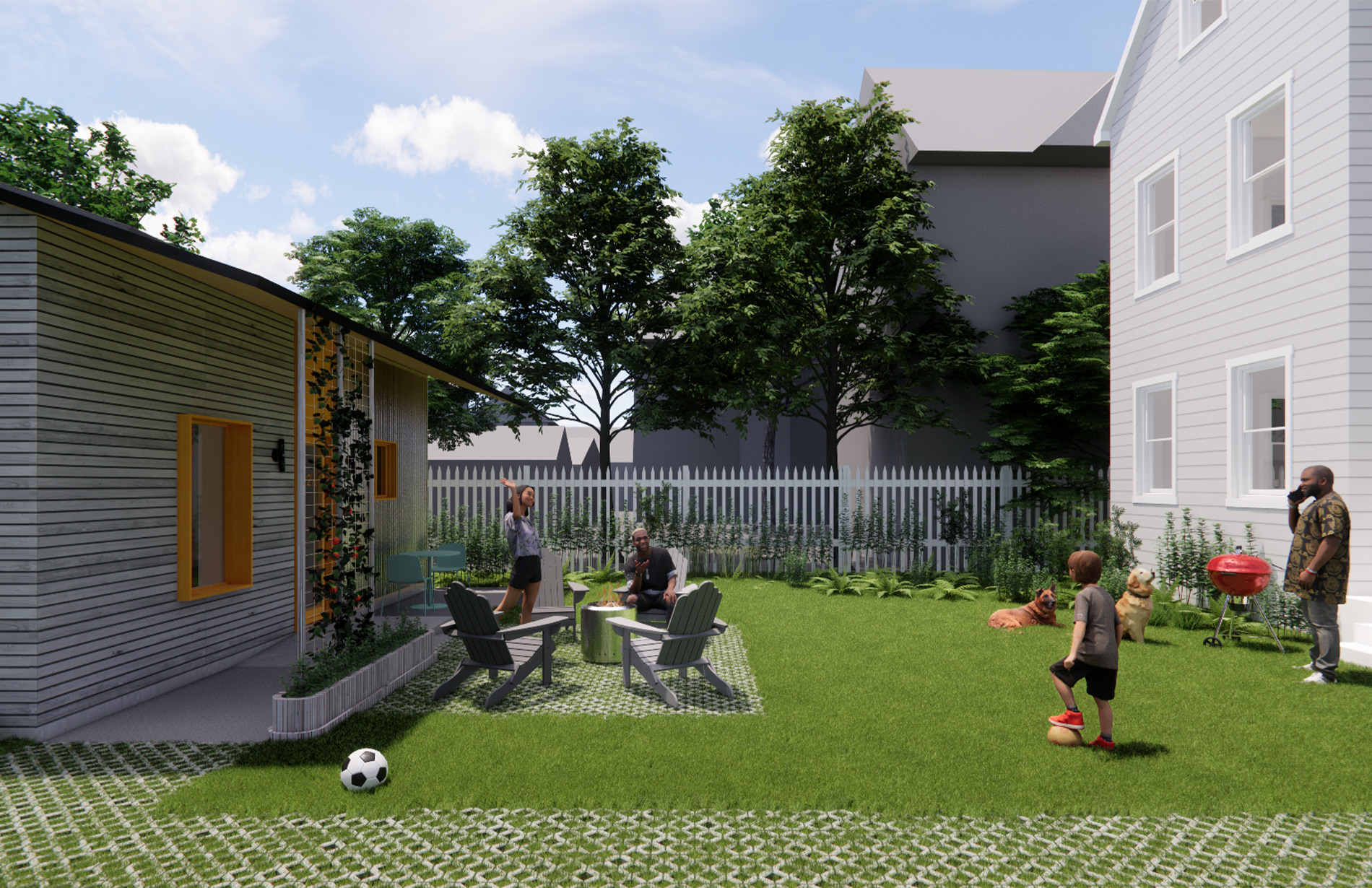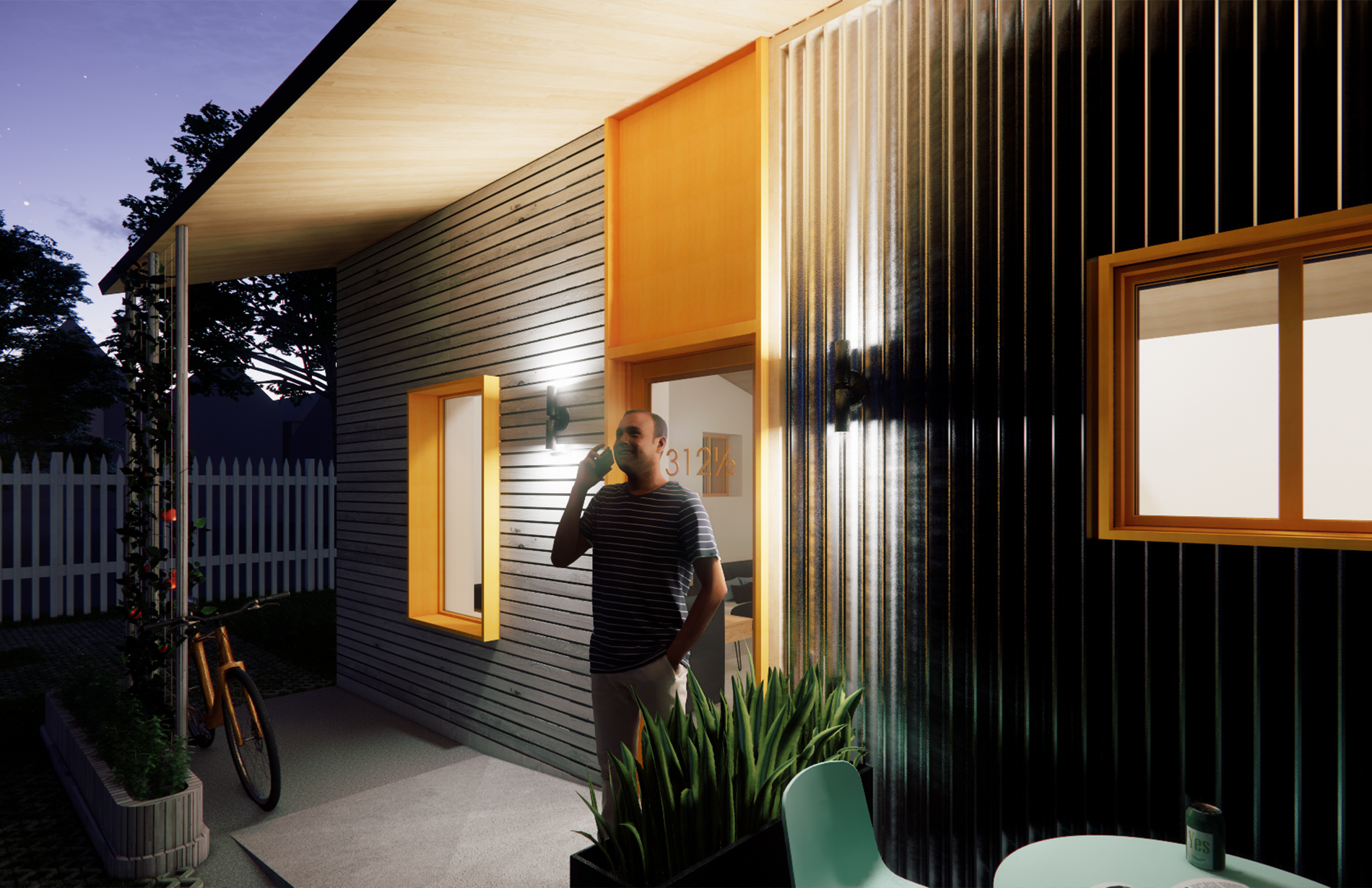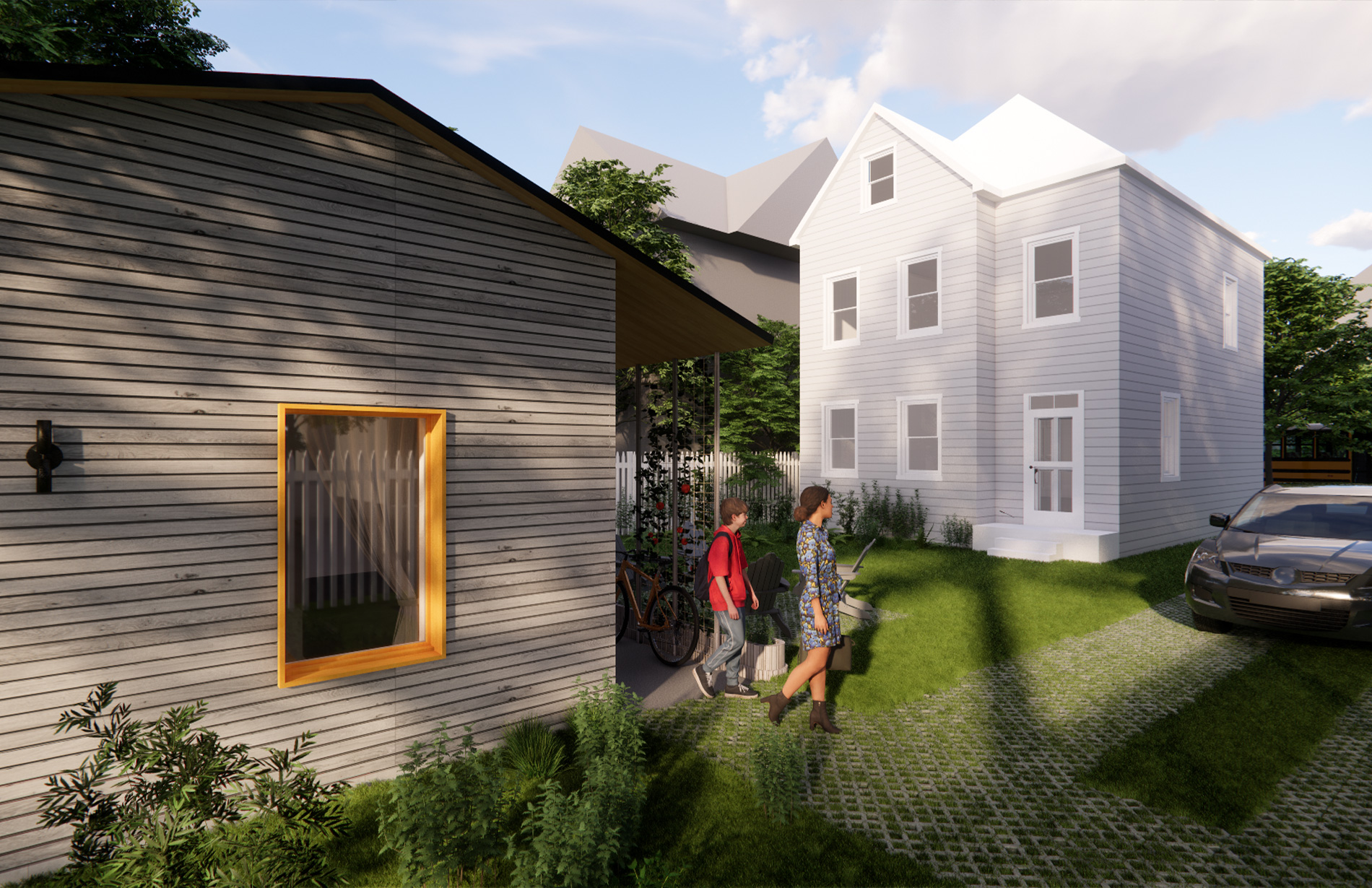Excelsior ADU
Kingston, New York, USA • 2023
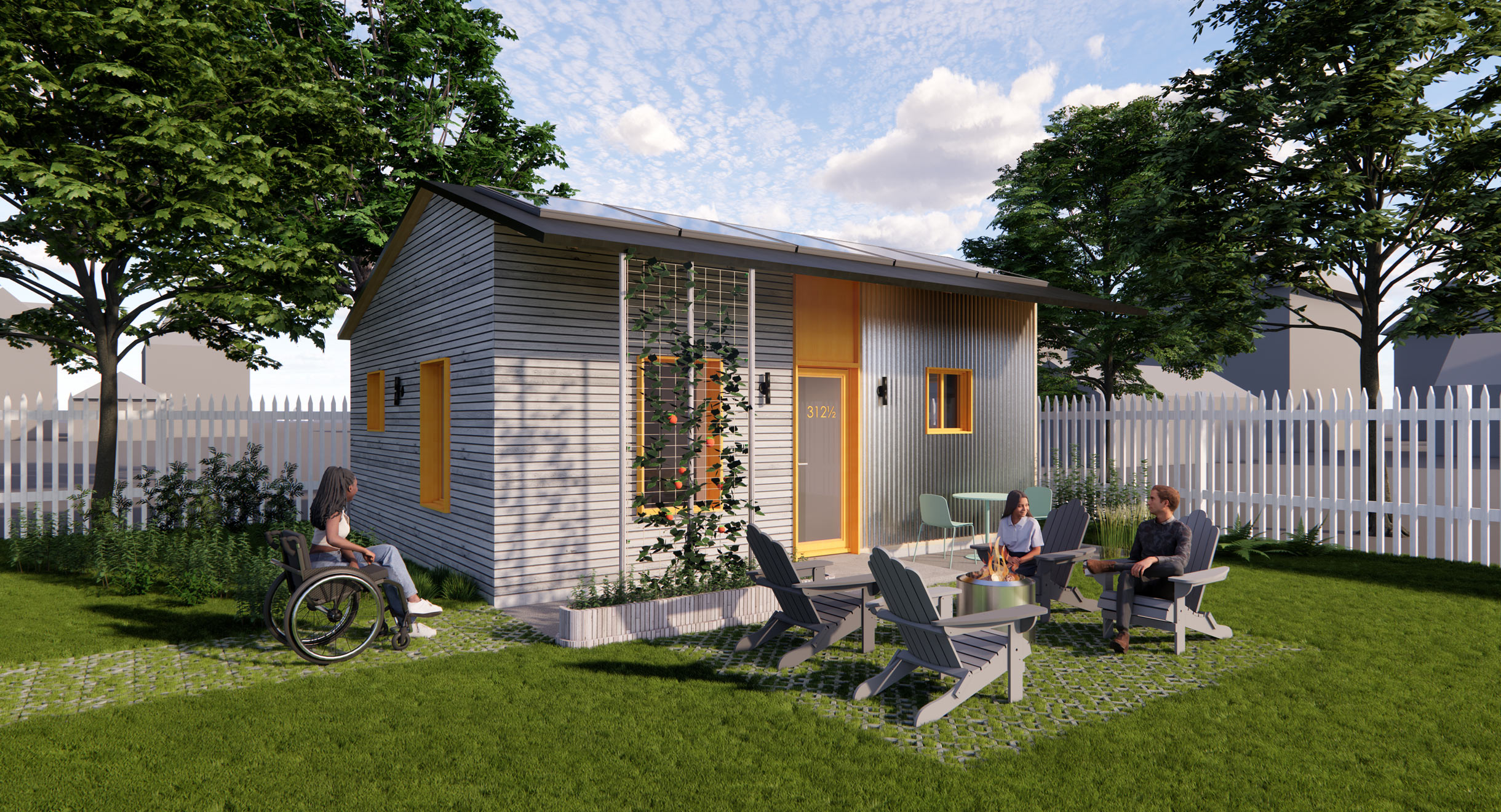
A prototype re-conceives the ADU as a no-compromises modular residence that is affordable, accessible and sustainable.
The Excelsior Accessory Dwelling Unit (ADU) combines circular and Passive House design principles to create a low-cost, sustainable and expandable option to increase access to housing in communities in New York State.
In an effort to keep the site footprint costs to a minimum, conventional ADUs are characterized by a series of compromises that limit flexibility, energy performance and comfort. Tiny homes can be cute but lack basic accessibility, climate control and clean energy based appliances and equipment.
Targeting an all-in hard and soft costs budget of $125K, the all-electric Excelsior ADU begins with a tight, flexible layout that exceeds ADA standards for accessibility and leverages Passive House principles for sustainability, comfort and indoor air quality. Continuous high R-value insulation, air barrier and thermal bridge-free design are combined with a modular infrastructural core that contains all plumbing, HVAC, electric sub-panel and PV inverter.
Energy recovery ventilation, and an ultra high efficiency heat pump for heat, A/C, and hot water reduce total power demand to under 60 amps.
A floating slab foundation minimizes embodied carbon, material and labor. Staggered stud framing leverages locally available pine and basic carpentry skills. Roof and wall dimensions are designed to minimize waste and off-cuts. Dense pack cellulose is inexpensive and easy to install. The interior and exterior cladding consist of pine boards, drywall, and corrugated metal panels.
Careful detailing of the exterior wall assembly allows for rapid disassembly and re-use of the framing and cladding to allow for expansion on one or both sides to create a larger floor area for PLUS or MAX layouts in the future.
DESIGN TEAM
- Jordan Parnass
- Greg Merryweather
- Alex Truica
- Aida Muhibic
- Zainab Akhtar
- Maravillas Astarloa
- Paul Loupe
- Lula Chou
- Allison Lam
CONSULTANTS
- Gasbarro Structural Engineering, PLLC
- Sherpa Construction Consulting, LLC

